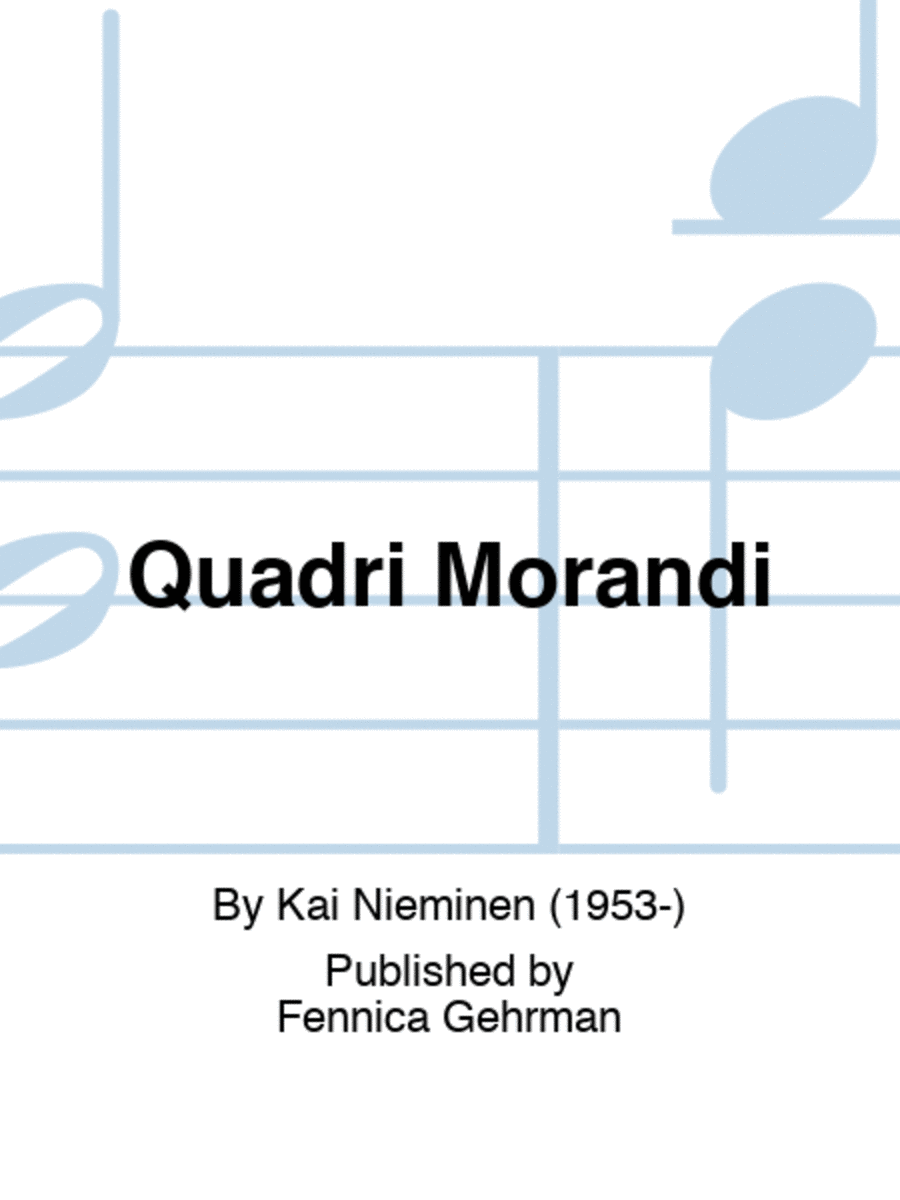Guitar
SKU: FG.55011-324-4
Composed by Kai Nieminen. Fennica Gehrman #55011-324-4. Published by Fennica Gehrman (FG.55011-324-4).
ISBN 9790550113244.
Quadri Morandi (2014) ties together two essential themes of Kai Niminen's (b. 1953) compositional style: guitar and a subject inspired by Italy. The strong presence of the guitar in his works is natural since he is in an actively performing guitarist himself, and guitar works indeed play a significant role in his oeuvre. Moreover, he has written plenty of orchestral music; for instance two symphonies, numerous concertos, and chamber music. In the field of Finnish music he is a composer who can be characterized as free from any specific school or style. In his musical language, free tonal in essence, one can detect traces of Impressionism, Neoromanticism and even Expressionism at times, but he is also willing to employ more recent 20th-century stylistic devices. Nieminen has mentioned that he finds himself very similar to Japanese Toru Takemitsu both musically and in thought.
Mediterannean culture and Italy especially have been close to Nieminen's heart ever since he first visited the country and appeared in the jury of the international Fernando Sor guitar competition in 1981. He has composed a great number of works which refer to Italian landscapes or artists. The work Quadri Morandi (Morandi's pictures) is written in four movements. It has at its centre the painter Giorgio Morandi (1890-1964), who is known as a master of still lifes and landscapes painted in a plain manner and is subdued colours. Their atmosphere typically reflects a calm spirit. This is the third guitar work that nieminen has written for Kleemola.
It is easy to find a counterpart for the encaptivating realm of Morandi's art in Nieminen's clear and pure expression. The titles and expression markings also include several references to Morandi. For example, in the opening movement Prelude the words la Natura morta (still life) appear as an additional note on the chord sequence following the freely flowing opening section. At the end of the movement one can hear rhythmic motif coloured with flageolets that repeats the syllables of the painter's name: Gior-gio Moran-di. A similar motif can be heard at the end of the second movement Quasi cadenza. The tranquilly breathing third movement Paesaggio (landscape) creates an illusion of landscape by imitating the echo of monastery bells (come campane del monastero) and at the same time refers to il monaco (the monk), the name by which Morandi was often called. The final movement Ritratto (Portrait) is the most extensive of all the movements and can be seen, with its recurring motifs, as a reflection of the stable yet subtly varying elements of Morandi's art. The work ends with the rhythmic motif that once more echoes Morandi's name, like signature.
Arr : GuitarPublisher : Fennica Gehrman$16.95 - See more - Buy online
 (AMERICAN COMPANY)
(AMERICAN COMPANY) 